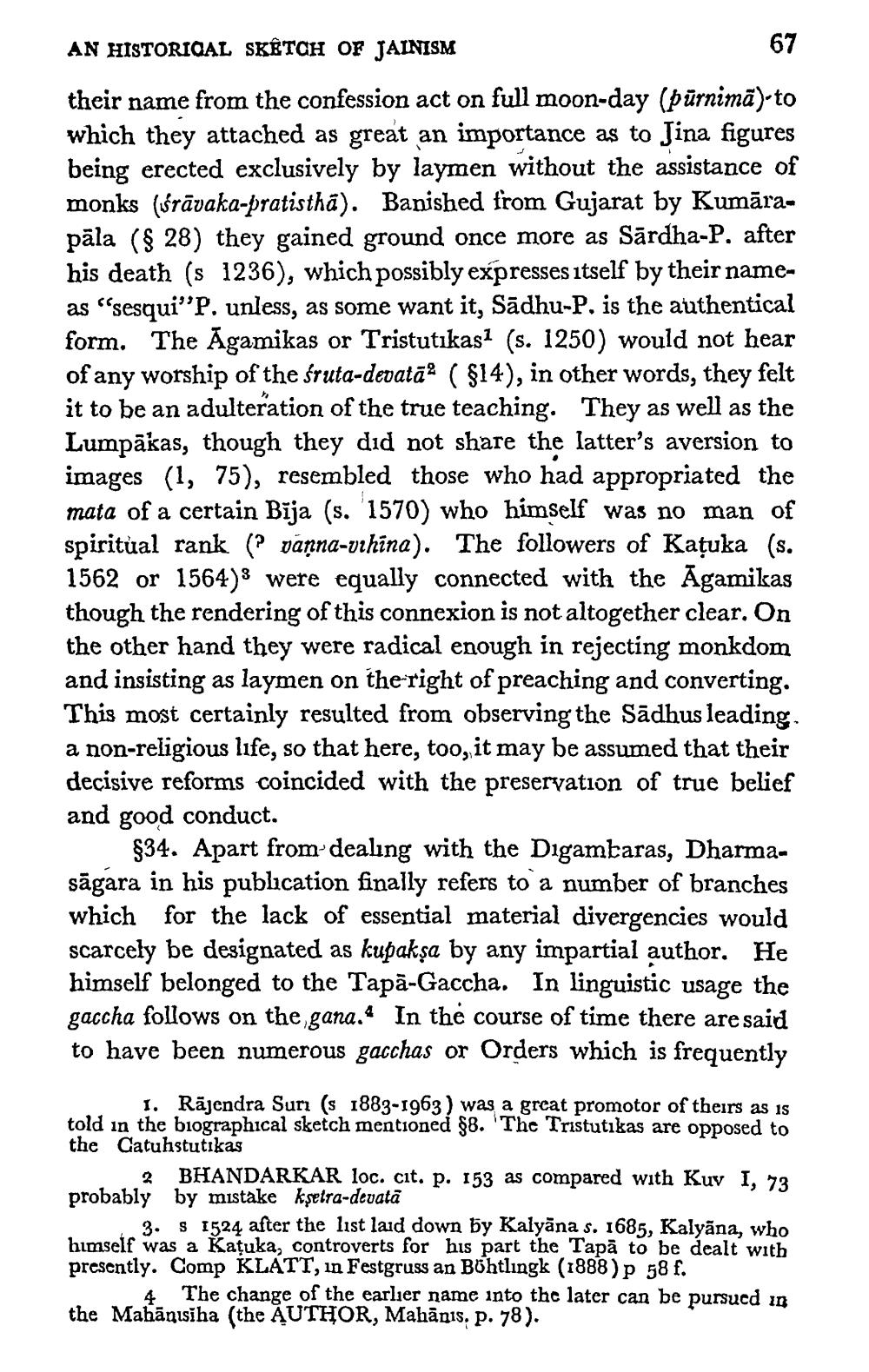________________
AN HISTORICAL SKETCH OF JAINISM their name from the confession act on full moon-day (pürnimā)-to which they attached as great an importance as to Jina figures being erected exclusively by laymen without the assistance of monks (iśrāvaka-pratisthā). Banished from Gujarat by Kumārapāla ($ 28) they gained ground once more as Sārdha-P. after his death (s 1236), which possibly expresses itself by their nameas "sesqui''P. unless, as some want it, Sādhu-P. is the authentical form. The Agamikas or Tristutikas? (s. 1250) would not hear of any worship of the śruta-devatā ( $14), in other words, they felt it to be an adulteration of the true teaching. They as well as the Lumpākas, though they did not share the latter's aversion to images (1, 75), resembled those who had appropriated the mata of a certain Bīja (s. 1570) who himself was no man of spiritual rank (? vanna-vrhīna). The followers of Kațuka (s. 1562 or 1564)3 were equally connected with the Āgamikas though the rendering of this connexion is not altogether clear. On the other hand they were radical enough in rejecting monkdom and insisting as laymen on the right of preaching and converting. This most certainly resulted from observing the Sädhus leading a non-religious life, so that here, too, it may be assumed that their decisive reforms coincided with the preservation of true belief and good conduct.
$34. Apart from dealing with the Digambaras, Dharmasāgara in his publication finally refers to a number of branches which for the lack of essential material divergencies would scarcely be designated as kupakşa by any impartial author. He himself belonged to the Tapā-Gaccha. In linguistic usage the gaccha follows on the gana. In the course of time there are said to have been numerous gacchas or Orders which is frequently
1. Räjendra Sun (s 1883-1963) was a great promotor of theirs as is told in the biographical sketch mentioned 88. The Tristutikas are opposed to the Catuhstutikas
BHANDARKAR loc. cit. p. 153 as compared with Kuv I, 73 probably by mistake kşetra-devatā
3. S 1524 after the list laid down by Kalyāna s. 1685, Kalyāna, who himself was a Katuka, controverts for his part the Tapā to be dealt with presently. Comp KLATT, in Festgruss an Bohtlingk (1888) p 58 f.
4 The change of the earlier name into the later can be pursued in the Mahānisiha (the AUTHOR, Mahānis, p. 78).




